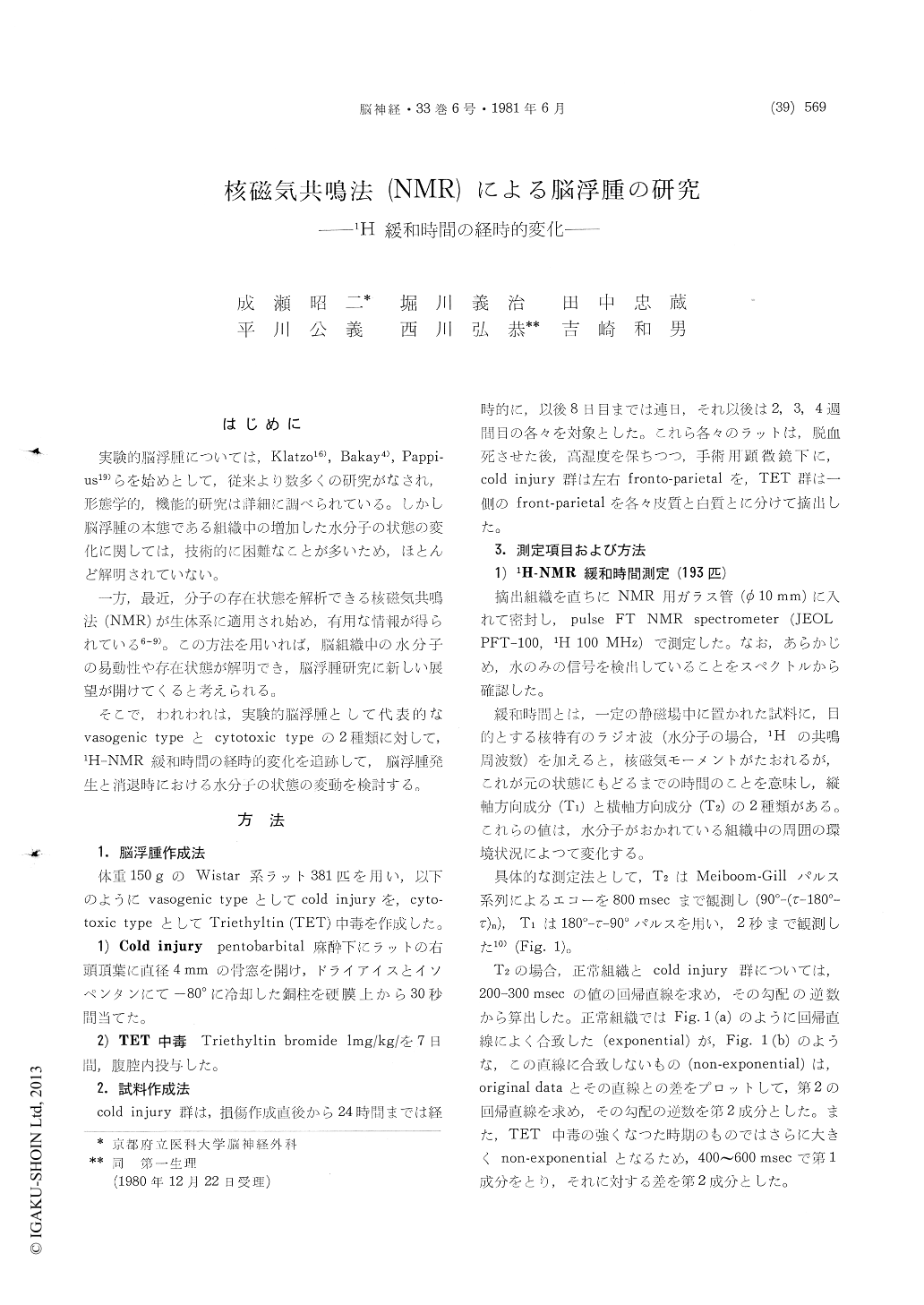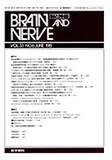Japanese
English
- 有料閲覧
- Abstract 文献概要
- 1ページ目 Look Inside
はじめに
実験的脳浮腫については,Klatzo16),Bakay4),Pappi—us19)らを始めとして,従来より数多くの研究がなされ,形態学的,機能的研究は詳細に調べられている。しかし脳浮腫の本態である組織中の増加した水分子の状態の変化に関しては,技術的に困難なことが多いため,ほとんど解明されていない。
一方,最近,分子の存在状態を解析できる核磁気共鳴法(NMR)が生体系に適用され始め,有用な情報が得られている6〜9)。この方法を用いれば,脳組織中の水分子の易動性や存在状態が解明でき,脳浮腫研究に新しい展望が開けてくると考えられる。
1. The state of water in normal and edematous brain tissue was studied by measurement of proton longitudinal (T1) and transverse (T2) relaxation times using pulsed nuclear magnetic resonance (NMR) technique.
2. In control rats, T1 and T2 of water showed one component, which was more fast in white matter. Those values displayed 1.07-1.18sec. of T1 and 75-76 msec. of T2.
3. When rat brain was injured by cold, T1 was obserbed to become more longer (1.18-1.27sec.), and T2 was observed to be separated into two components, the faster T2 (45-50msec.) and slower T2 (100-105msec.), in both gray and white matter of the injured side.
4. In triethyltin (TET) induced brain edema, elon- gation of T1 (1.2sec.) and remarkable separation of T2, faster T2 (75msec.) and slower T2 (400- 450msec.), were observed in white matter.
5. In both cold and TET induced edema, slower T2 fraction is suggested to be the extracellular space and faster T2 fraction, intracellular.
6. T2 changes precede the water content changes in cold injury, and parallel in TET induced edema. Those changes of relaxation times are reversible.
7. T2 changes of water is more sensitive than the T1 for the detection of production and disap- pearance of brain edema.
8. These results disclose the dynamic movements of water during the course of brain edema and offered significant information of the clinical applicaton of NMR-CT.

Copyright © 1981, Igaku-Shoin Ltd. All rights reserved.


